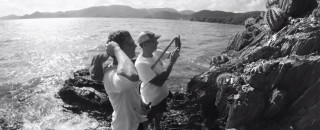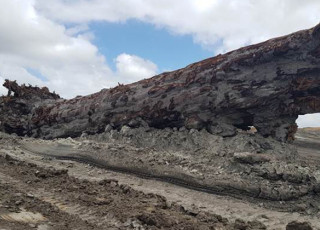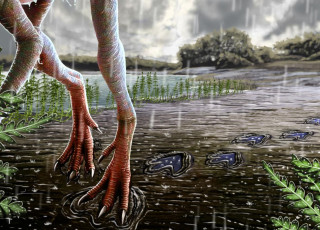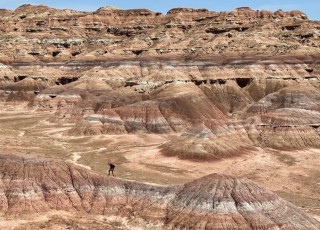Paleo Storms
By Brian Switek
Hurricanes are storms of incredible power and violence. Puerto Rico, which was struck by Hurricane Maria in the fall of 2017, is still recovering from the devastation wrought by a storm that had wind speeds reaching up to 175 miles per hour. And it’s certainly not the last hurricane of its kind. New storms form every year, which makes it all the more important to look to the past.
Paleotempestology is a scientific field that you may not have heard of before. Part of the reason why, University of Utah Department of Geography PhD graduate Joshua Mueller says, is that the study of ancient storms is only about as old as Windows 95. “Paleotempestology is a somewhat new field of study in the geosciences world,” he notes, the discipline first coalescing in the mid-90s.
This is storm chasing through geology, and the record goes back quite a long way. Mueller says most of his study sites in the British Virgin Islands go back to about 2,000-3,000 years ago, but there are others that may be older than 6,000 years. “We are really only limited to how far back in time we can go by the age of the depositional environment,” Mueller says.

And how do these specialized researchers go about following storms of long ago? Sediment cores of areas showing signs of storm disturbance provide the essential data, which are then analyzed for more specific details. The toolkit Mueller developed for his dissertation research, he says, “included changes in organic content, changes in particle size, and changes in elemental signals, all within a sediment core collected from these coastal environments.”
These investigations can reveal the behavior of storms that we might otherwise be blind to. “One of the biggest discoveries in my research so far,” Mueller says, “is that there appears to be a cycle of at least three large hurricane events every 900 years occurring throughout the Caribbean basin.” Sediment cores also revealed three large hurricanes that landed on three islands at the same time, the geologic record showing that these storms wreaked havoc in the area about 320, 500, and 700 years ago.
What happened before can help us better understand what’s happening now, or may transpire in the future. “As we saw during the 2017 Atlantic hurricane season,” Mueller says, “these storms are evolving and breaking modern records with ease, and the more we know about how hurricanes evolved in the past, and why, the better grasp we can have on predicting how they will continue to change.” Combining knowledge of past hurricanes with other information - such as how our climate is continuing to shift - may help researchers better understand how and why these storms form, and, perhaps, how we can better prepare ourselves to withstand them.
Brian Switek is the author of My Beloved Brontosaurus, Prehistoric Predators, and a science writer for the Natural History Museum of Utah, a part of the University of Utah in Salt Lake City. Our mission is to illuminate the natural world and the place of humans within it. In addition to housing outstanding exhibits for the public, NHMU is a research museum. Learn more.



